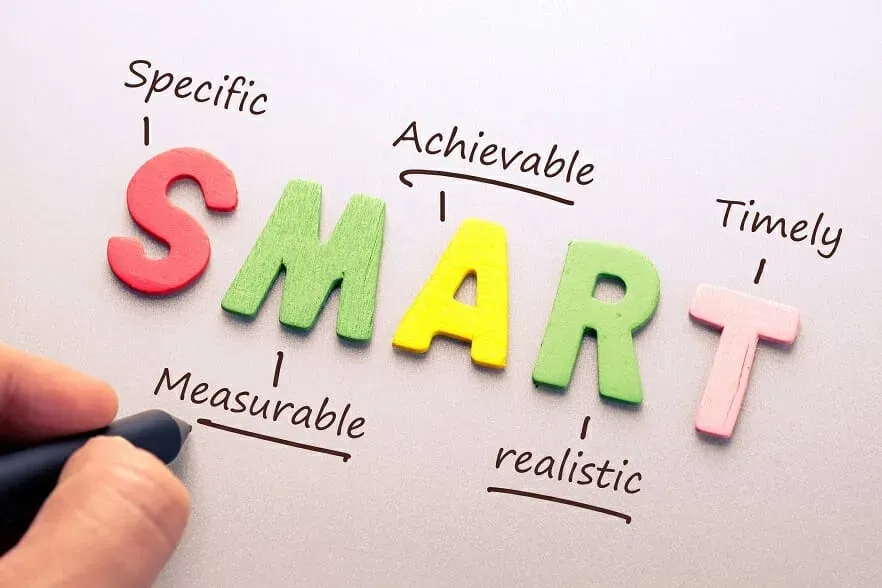When it comes to money, most of us have dreams. Maybe it’s owning a home, traveling the world, or simply living without the weight of debt.
But dreams don’t turn into reality by wishful thinking alone. It takes clear goals and a smart approach to get there. If you’ve ever felt stuck trying to improve your financial health, the problem might be in how you set your goals.
Many people fall into the trap of setting vague or overly ambitious financial goals. For example, saying “I want to save more money” or “I need to get out of debt” is a great start, but it’s not enough to create real change. That’s why learning to apply SMART goals — Specific, Measurable, Achievable, Relevant, and Timely — can transform your financial journey.
If debt has been holding you back, exploring debt relief options alongside SMART goal-setting can give you a clear path forward, making what feels overwhelming manageable. Let’s break down how you can apply SMART goals to your financial health and actually make progress toward the life you want.
Specific: Get Clear About What You Want
Vague goals are like trying to hit a target in the dark. Saying “I want to save money” leaves too much open to interpretation. How much? For what? Setting a specific goal means you clearly define what you want.
Instead of “save money,” try “save $3,000 for an emergency fund.” Instead of “pay off debt,” say “pay off $5,000 in credit card debt.” The more precise you are, the easier it is to create a plan and stay motivated.
Measurable: Track Your Progress
If you can’t measure it, you can’t improve it. Measurable goals let you see how far you’ve come and how far you have to go. This feedback helps keep you on track and motivated.
For instance, if your goal is to save $3,000 in six months, that breaks down to $500 a month. You can check your bank statements to make sure you’re hitting your targets. If you’re off track, you can adjust your budget or find ways to increase income.
Measuring your progress also helps when working with debt relief programs. You’ll know how much debt has been reduced and celebrate those wins along the way.
Achievable: Set Goals You Can Actually Reach
Sometimes people set goals that are too big or unrealistic for their current situation. That’s a recipe for frustration. The “A” in SMART reminds you to be honest with yourself.
Look at your income, expenses, and other commitments before setting your goal. If $500 a month is too much right now, maybe start with $200. Achieving smaller goals builds confidence and creates momentum.
Remember, it’s not about perfection but progress. Even small steps toward paying off debt or saving are wins.
Relevant: Align Your Goals With Your Life
Your financial goals should fit your values and where you are in life. It’s easy to set goals just because others do, but if they don’t matter to you, motivation will fade.
Ask yourself: Why is this goal important? How does it help me in the bigger picture? For example, if you want to save for a vacation but you’re struggling with high-interest credit card debt, maybe prioritizing debt relief is more relevant right now.
Making sure your goals align with your life keeps them meaningful and increases your chances of success.
Timely: Put a Deadline on It
Without a deadline, goals tend to drift. A timeline creates urgency and helps you plan your steps.
For example, instead of “save $3,000 someday,” say “save $3,000 by December 31.” Breaking that into monthly or weekly targets makes the goal feel more manageable.
Deadlines also help prevent procrastination. When you know you have to meet a goal within a certain time frame, it becomes easier to focus and prioritize.
How SMART Goals Change Your Financial Mindset?
Applying SMART goals is more than just a planning tool—it changes how you think about money. It turns vague worries into clear actions. Instead of feeling overwhelmed by debt or savings goals, you create a roadmap that guides you.
This mindset shift also reduces anxiety. When you have a plan that’s specific and realistic, money feels less like a mystery and more like a resource you control.
Taking Action: Start Small and Build
If setting SMART goals feels intimidating, start small. Pick one simple financial goal, like tracking all your expenses for a month or paying an extra $50 toward debt.
As you get comfortable, add more goals or increase targets. The key is consistency, not speed. Over time, these small actions build into significant progress.
Remember, combining SMART goal-setting with resources like debt relief can be powerful. Professional help can guide you through the complex parts of paying off debt, while SMART goals keep you motivated every step of the way.
Final Thoughts
Financial health is not a one-time achievement—it’s a journey. And like any journey, having a clear map makes all the difference. SMART goals give you that map, turning your financial dreams into reachable milestones.
Next time you think about money goals, try applying the SMART framework. Make your goals specific, measurable, achievable, relevant, and timely. You’ll find that money worries start to fade, replaced by confidence and clarity.
With the right mindset and plan, financial independence isn’t just a dream—it becomes your reality.

